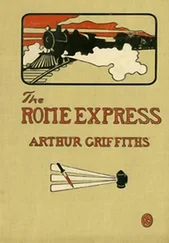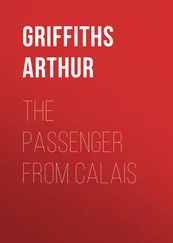The king took very summary measures for the punishment of the rioters. Bell the preacher was arrested and sent to the Tower. A commission of oyer and terminer was forthwith opened at the Guildhall, and the whole of the prisoners, to the number of two hundred and seventy-eight, were marched through the streets, tied with ropes, and put upon their trial. Lincoln the ringleader and other thirteen were sentenced to be hanged, drawn, and quartered; for execution whereof ten pairs of gallows were put up in divers parts of the city: “before each of the Compters, at Newgate, St. Martin’s, Aldersgate, and Bishopgate, which gallows were set on wheels, to be removed from street to street and door to door as the prisoners were to be executed.” Lincoln suffered death, but the rest were reprieved pending the king’s pleasure. He lay at his manor of Greenwich just then, and thither the mayor, recorder, and divers aldermen repaired to beg mercy for the city. But Henry VIII. was not to be easily appeased. He still blamed the city authorities for not checking these disorders in a more determined fashion, and referred them for answer to his chancellor the cardinal. Wolsey granted them his favour for a consideration, and counselled them to again petition the king. They came to him, therefore, at his palace of Westminster, to the number of four hundred men, in their shirts, bound together with ropes, and with halters about their necks, and were at first sharply rebuked by the cardinal, who told them they deserved death. But at the earnest entreaty of the attendant lords, who were much moved by the humiliating sight, they were pardoned and dismissed. The gallows in the city were taken down, and all in durance were set free. Thus ended the “black waggon,” as the procession of citizens was called, but “not, as it is thought, without paying a considerable sum of money to the cardinal to stand their friend, for at that time he was in such power he did all with the king.”[33]
A few further extracts will serve to describe some other criminal inmates of Newgate in those times. The quotations are from the ‘Remembrancia,’ 1579–1664. Searches appear to have been regularly made for suspected persons, who when caught were committed to ward. Thus, 1519, a search was made in the house of William Solcocke in Holborne, and it was found that one Christopher Tyllesley had lain there two nights. “He has no master, and is committed to Newgate.” Again, “in the house of Christopher Arundell one Robert Bayley: has no master, and is committed to Newgate.” To Newgate were also committed any who were bold enough to malign the great Cardinal Wolsey, in the plenitude of his power, as was Adam Greene in June 1523, a prisoner in Ludgate, who repeated to the keeper what he had heard from a “bocher” (butcher), to the effect that Wolsey had told the king that all London were traitors to his Grace. Greene was warned to keep silent, but he said “he would abide by it, for he had it from a substantial man who would also abide by it.”
It was not less dangerous to let the tongue wag too freely against the city authorities. Articles are exhibited (April, 1524) against “John Sampye, tailor, for saying (1) that he had been wrongfully imprisoned in the Compter by the Mayor of London and Nicholas Partriche, alderman; (2) that they had no power to send any man to ward; (3) that many were cast away by lying in the Compter and Newgate at the command of the Corporation.” The Corporation appear also to have dealt in a very high-handed fashion with the city bakers, possibly to break down their monopoly, but a little on personal private grounds. In 1526 the bakers petition Wolsey for redress, setting forth that they have always been accustomed to “occupy the making and selling of bread for the city, and since the time of Edward II. have been used to take up wheat arriving in London at the price given them by the mayor; but within the last five years certain persons, aldermen and others, out of malice to the mystery and under colour of common weal, have procured that all the wheat coming to the city should be garnered at the Bridge House, and the bakers suffered to buy no other. … Lately the mayor and aldermen tried to compel the bakers to buy two thousand quarters of musty wheat at 12 s. when sweet wheat may be bought for 7 s. or 8 s. ” When some bakers refused the mayor sent them to Newgate for eleven days, and shut up their houses and shops, not allowing their wives or families to visit them or buy their bread.
Now and again more serious crimes are recorded. In March 1528, Stephen reports to Thomas Cromwell that between the hours of six and seven, “five thieves knocked at the door of Roderigo the Spaniard, which dwelleth next the goldsmith against your door.[34] Being asked who was there, they answered one from the Court, to speak with Roderigo. When the door was opened three of them rushed in and found the said Roderigo sitting by the fire with a poor woman dwelling next to Mrs. Wynsor. Two tarried and kept the door, and strangled the poor woman that she should not cry. They then took Roderigo’s purse, and killed him by stabbing him in the belly, but had not fled far before two of them were taken and brought to Newgate.”
Debtors were too small fry to be often referred to in the chronicles of the times. Now and again they are mentioned as fitting objects for charity, royal and private. In the king’s book of payments is the following entry, under date May 1515. “Master Almoner redeeming prisoners in Newgate, Ludgate, and the Compter, £20.” The State Papers, 1581, contain a commission to the Lord Mayor, recorder, and sheriffs of London, and many others, all charitable folk, and some sixty in number, to compound with the creditors of poor debtors, at that time prisoners in Newgate, Ludgate, and the two Compters of the city. Although debtors in gaol who volunteered for service on shipboard were discharged by proclamation from the demands of their creditors, as a general rule committal to Newgate on account of monetary mismanagement appears to have been more easily compassed than subsequent release. The same volume of State Papers contains a petition from Richard Case to Lord Burghley, to the effect that he had been committed to Newgate “upon the unjust complaint of Mr. Benedict Spinola, relative to the lease of certain lands and tenements in London.” The petitioner further “desires to be discharged from prison, and to have the queen’s pardon,” but there is no allusion to his enlargement.[35] The impolicy of confining debtors was not to be fully realized till three more centuries had passed away. But as early as 1700 a pamphlet preserved in the ‘Harleian Miscellany,’ and entitled ‘Labour in Vain,’ anticipates modern feeling and modern legislation. The writer protests against the imprisonment of debtors, which he compares to shutting up a cow from herbage when she gives no milk. “In England we confine people to starve, contrary to humanity, mercy, or policy. One may as reasonably expect his dog,” he says, “when chained to a post should catch a hare, as that poor debtors when in gaol should get wherewithal to pay their debts.”
Details of the incarceration and sufferings of prisoners for conscience sake, in an age when polemics were backed up by the strong arm of the law, are naturally to be met with more frequently in the partisan writings of the time. Throughout the reigns of Henry VIII., Mary, and even in that of Elizabeth, intolerance stalked rampant through the land, filling the prisons and keeping Smithfield in a blaze. Henry was by turns severe on all creeds. Now Protestants, now Catholics suffered. He began as an ardent champion of Romish doctrines, and ended by denying the supremacy of the Pope. In the first stage he persecuted so-called heretics, in the second he despoiled Church property, and sent monks and priors to gaol and to the gallows. Foxe gives a long and detailed list of the Protestant martyrs from first to last. One of the most prominent was Richard Bayfield, a monk of Bury, who became an inmate of Newgate. Foxe relates[36] that a letter of inquiry was issued by the Bishop of London to the Lord Mayor and sheriffs to be present at St. Paul’s on the 20th November 1531, to receive the said Richard Bayfield, alias Soundesam, “a relapsed heretic after sentence.” The sheriffs carried him to Newgate, whence they were commanded again to bring him into Paul’s upper choir, there to give attendance upon the bishop. Later on they are ordered to have him into the vestry, and then to bring him forth again in Antichrist’s apparel to be degraded before them. “When the bishop had degraded him,” says old Foxe, “kneeling upon the highest step of the altar, he took his crosier staff and smote him on the breast that he threw him down backwards and brake his head, and that he swooned; and when he came to himself again he thanked God that he was delivered from the malignant Church of Antichrist, and that he was come into the true sincere Church of Jesus Christ militant here on earth; … and so was he led forth through the choir to Newgate, and there rested about an hour in prayer, and so went to the fire in his apparel manfully and joyfully, and there for lack of a speedy fire was two quarters of an hour alive.”
Читать дальше












